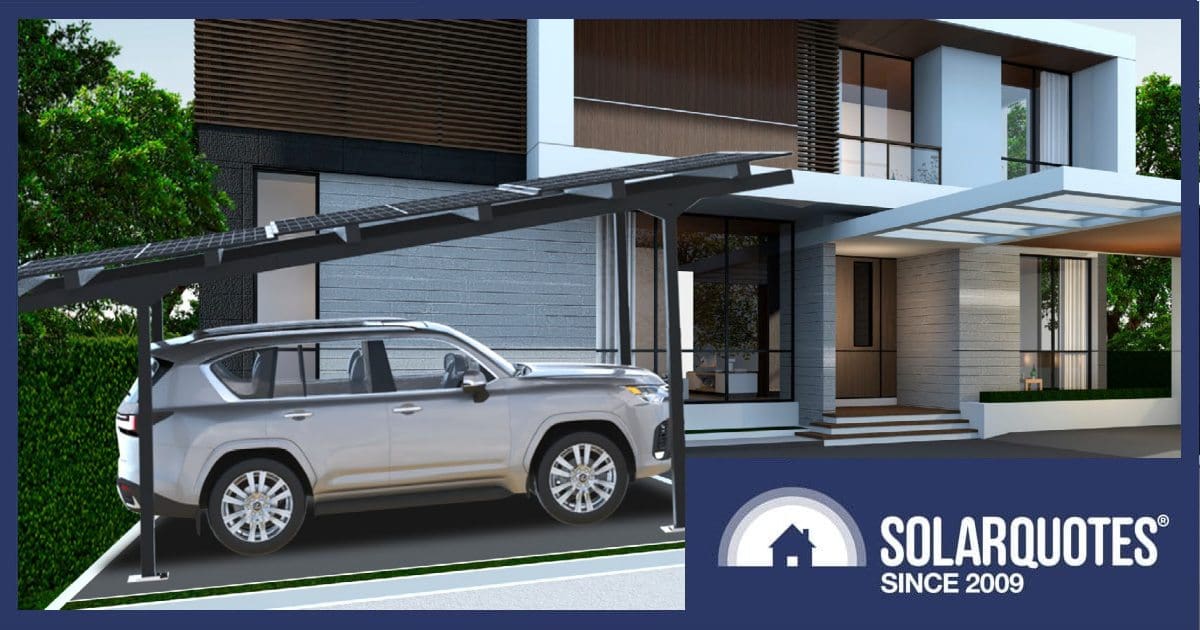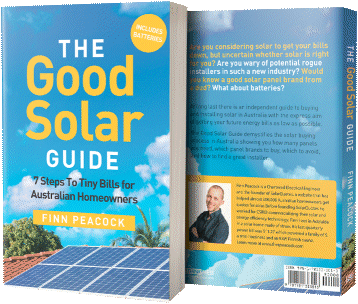
Thinking of adding a carport and installing solar panels on it? Enter GoodWe’s Vela solar carport solution, which also features components provided by an Australian company.
Back in 2023, Chinese solar manufacturer GoodWe announced a strategic alliance partnership with Australia’s Umax Energy to introduce and support GoodWe’s Building Integrated Photovoltaic (BIPV) products here. The partnership has continued to evolve with the Vela solar carport that was formally launched by GoodWe in Australia in April this year, although it has been around for longer than that.
Geared primarily towards the residential market, the Vela combines solar panels for the roof and a lightweight but resilient aluminium alloy structure that can be used in Wind Region C (cyclonic) areas, capable of withstanding wind speeds of up to 220 km/h.
There are two versions available, a single and a double carport model. Both use 535-Watt GoodWe Polaris modules that are bifacial, meaning they can harvest light from the back as well as the front face. The single Vela carport offers 4.815 kW (front-face) solar capacity, while the double offers 8.025 kW capacity.
The carports have a length of 6.5 metres and the width of the single is 3 metres; while the double is 5.2 metres wide. Both have adjustable peak heights of 3 – 3.5 metres, and clearance heights of 2 – 2.5 metres.
The modular design makes it simple for just a couple of people to complete the Vela structure setup says Umax, and it can be self-installed (where permitted). But I’m assuming if this is to be grid-connected, it would require a qualified solar installer — it would certainly need an appropriately qualified sparkie to make the electrical connections. GoodWe says the structure can be installed in as little as 3 hours, but doesn’t mention how many people that involves.
GoodWe Solaris Bifacial Panel Specifications
The single Vela carport has nine solar panels, while the double comes with fifteen. The following are some basic specs:
- Model: BMT-P2/132A
- Power: 535 W
- Size: 2142 x 1160 x 29.6mm
- Weight: 30±0.5kg
- Cell type: N-Type TOPCon Half Cells
- Efficiency: 21.5%
- Structural waterproofing, integrated drainage.
Oddly enough, GoodWe doesn’t have any information on the Vela carport on its Australian website, but there’s there’s some more detail on Umax’s. Their inclusion of a video on night-time in Antarctica on the “effortless installation” tab is a bit of a head-scratcher, but anyway.
If you don’t already have a solar inverter capable of taking the extra capacity, GoodWe manufactures inverters and offers one of the better budget ranges available in Australia.
What’s The Vela Cost?
I don’t have any pricing from GoodWe/Umax, but I saw an ad from a few months ago on another website offering the single carport for just over $12,000 and the double for just under $17,000. But as the Solaris solar panels are approved by the Clean Energy Council (CEC), they *may* also be eligible for Australia’s solar rebate.
You can claim additional Small-scale Technology Certificates (STCs — on which the rebate is based) when adding solar panels to a previously installed system using an existing inverter within its oversize limits, or if you install an additional solar system with new CEC-approved panels and inverter at the same property. An appropriately accredited installer will need to do this work. If rebate availability is a deal breaker, perhaps first check with the Clean Energy Regulator about your plans.
Vela Solar Carport Warranty
There’s a 15-year product warranty covering both the structure and solar panels, supported by GoodWe and Umax Energy. There’s also a 30-year performance warranty on the Solaris solar panels allowing for 1% degradation in the first year and then 0.4% annually in subsequent years.
If you’re looking to transform an unprotected parking space into one that can help shield your vehicle and the bonus of turning it into a clean power station to help supply energy to your home and/or charge an electric vehicle appeals, the Vela might be worth a closer look.


 RSS - Posts
RSS - Posts



I’d have to imagine the web designer made a minor typo and fortunately the resulting video is something tasteful? Odd that nobody spotted it though…?
Oh also the carport seems like a fairly decent idea. Since the objective of a carport is to keep *some* weather off the car, no need for two layers of roof?
(For heavy weather or for very fancy cars a fully enclosed garage may be preferable, but a car port is what it is…)
My neighbour built his own version of this last year to cover his water tanks.
He is a retired electrical engineer and did all the system design himself.
It’s definitely something I would like and solves my 2 issues- a carport (even if not totally weatherproof) and a much needed expansion of my 4.8kW roof system. Having tried to get a few quotes from regular carport builders and finding no-one interested , I’d like to see more info on it in Australia.
You might like to view this –
https://umaxsolarcarport.com/promotion/
and to contact them.
Definitely a great idea be good to get a add with pricing etc and availability !!
The huge problem I have with BIPV is damage. If a panel is shattered whether it be a rock/hail or perhaps fails under warranty a few years down the track, it will be very difficult if not impossible to locate a suitable replacement from a physical size, aesthetic and electrical characteristics due to rapidly evolving technologies. It is hard enough to locate a 5 year old module from a leading manufacturer, let alone a bespoke module. This would end up in needing to use blanking plates to replace any damaged/failed modules I imagine. I would strongly advise anyone considering BIPV to acquire spare modules, similar to keeping spare tiles after a reno. It really baffles me why supplying spare modules hasn’t become a thing, especially now they are priced so low.